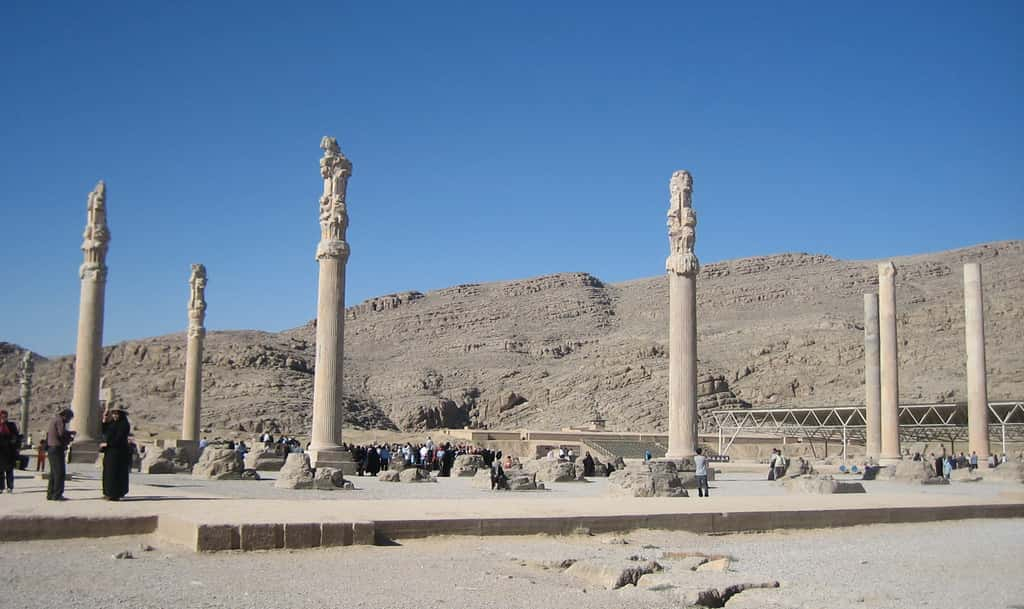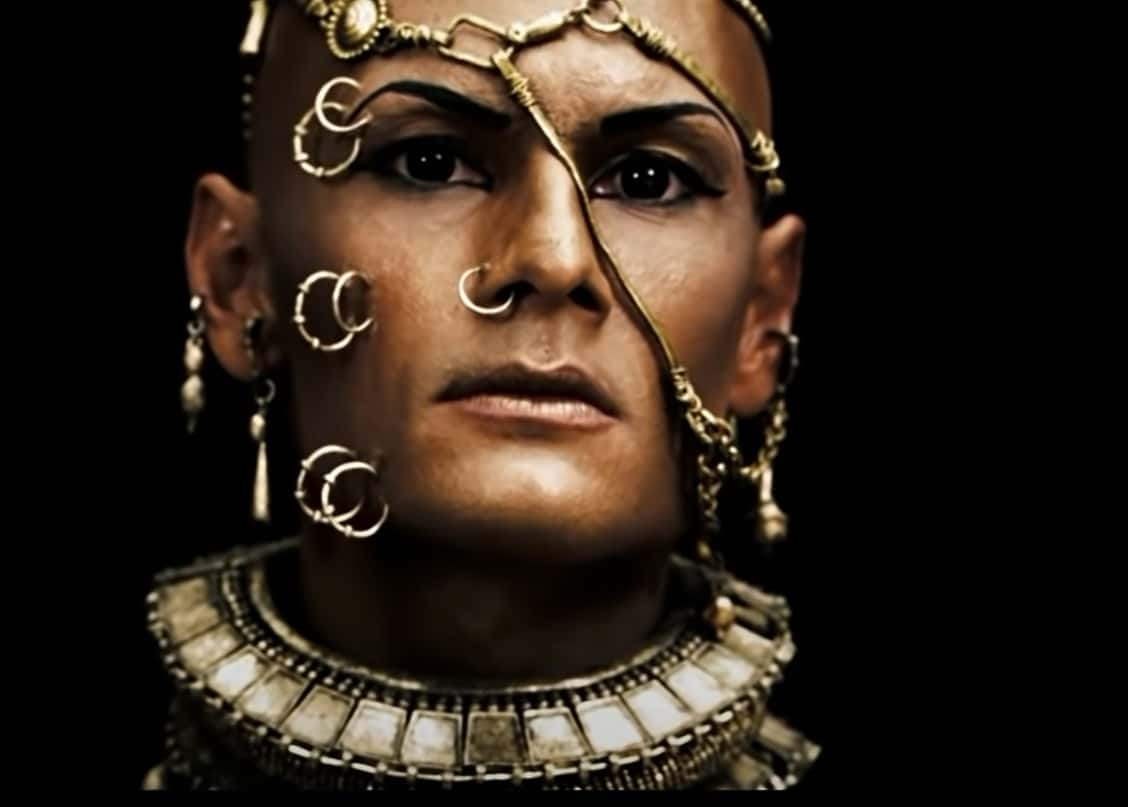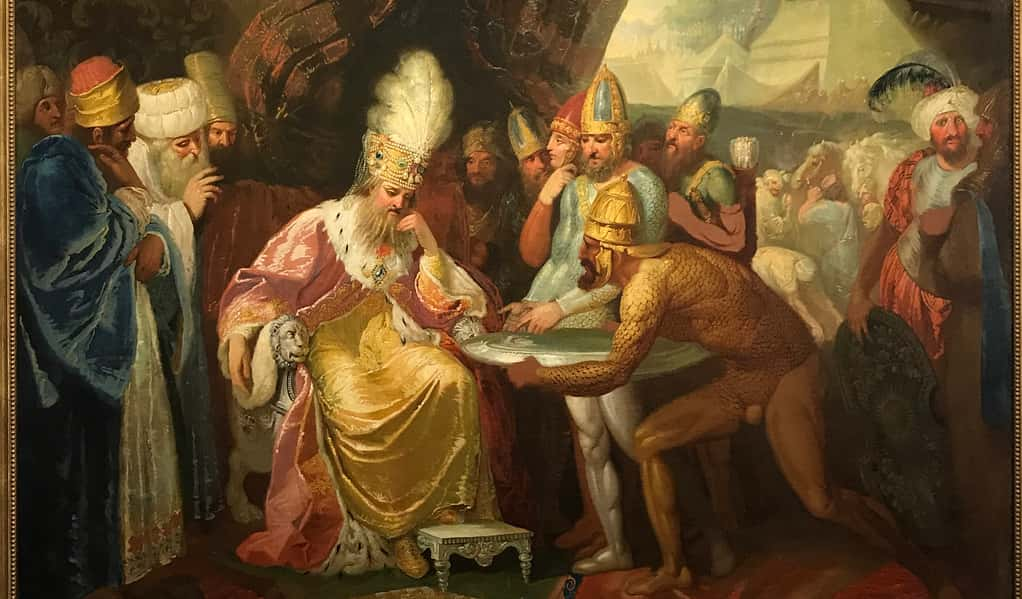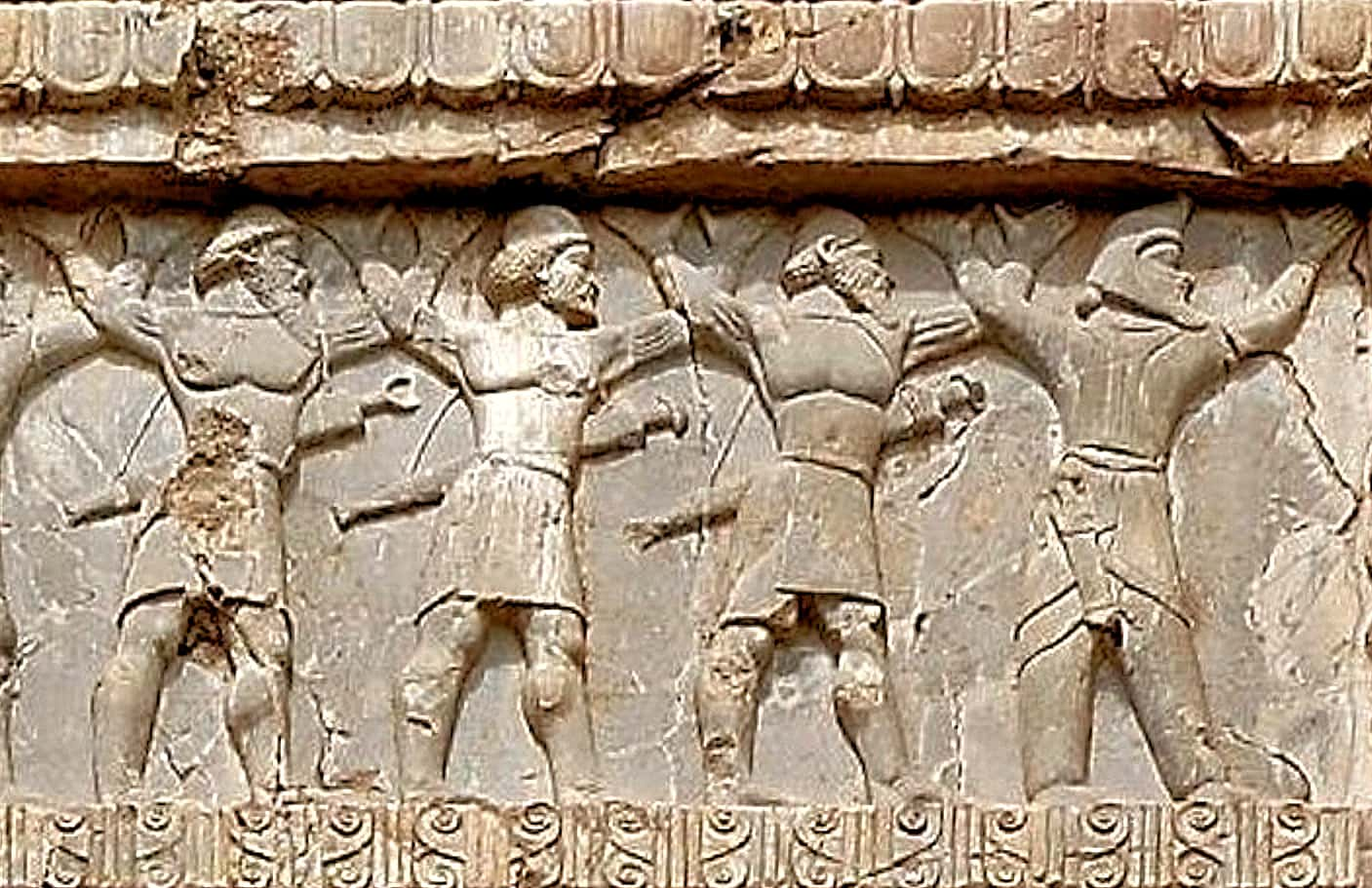"I am Xerxes, great king, king of kings, the king of all countries which speak all kinds of languages, the king of the entire big far-reaching earth." Xerxes, from a tablet found at Persepolis
Ruling over the largest kingdom in ancient history, the kings of the Persian Empires were some of the most powerful men in history. From the founding of the Achaemenid Empire in the year 550 BCE until the final Shah ruled over Iran as a part of the Qajar Dynasty and was forced out in 1925, there is a long, richly storied history of Persian emperors who left their mark on the world. Here are 38 golden facts about Persian emperors.
1. Get Rich Quick Scheme
The first taxation system of the Achaemenid Empire was created by Darius the Great. He did this by coming up with the idea that satraps must pay a tribute to him as a way to generate revenue for his infrastructure projects.

2. One King to Rule of Them All
A province ruler in Ancient Persia was known as a satrap. In order for the men who ruled over all of Persia to distinguish themselves from the regular satraps, Cyrus the Great developed a specific title to claim his absolute power: Xšâyathiya Xšâyathiyânâm. Meaning “The King of Kings,” this title was used for the emperors of Persia from its inception in the 6th century BCE all the way up until the medieval era, when even the Islamic dynasties adopted it.
3. Expansion Games
Darius I was a follower of the ancient faith known as Zoroastrianism, and he was responsible for converting the entire Persian empire to the religion. He was also the emperor to bring the Ancient Persian empire, known as the Achaemendid Empire, to its greatest extent. He ruled from 521-486 BC, and by the time his life ended, he controlled more land than any other man in history.
4. Building an Empire
While he was expanding the ancient Persian Empire and bringing it to great heights, Darius I was also setting a foundation for it to sustain itself. He made the city of Persepolis in modern-day Iran into the religious and administrative center of the empire, built vast irrigation systems, and constructed a royal road which allowed for effective and fast contact between the network of administrations between different regions.
 Flickr
Flickr
5. Postal Road
The Royal Road of Persia constructed by Darius was used to create the world’s first postal service. Stretching for over 2,600 km, couriers were able to get anywhere in the vast empire in just one week.
6. Take Me To The Sea
Known as “The Canal of the Pharaohs,” Darius I built the first Suez canal at the turn of the 5th century BCE. An impressive construction, this canal lasted nearly 13 centuries, and flowed from the Nile Delta to the Red Sea via the Bitter Lakes, much like the modern Suez canal.
 Wikipedia
Wikipedia
7. You May Be Older, But...
Xerxes actually almost never got the chance to rule over Persia. Following the demise of his father, Darius I, the eldest brother, Artobazan, asserted his entitlement to the throne, being the first-born son. Xerxes knew this would be difficult to counter, so he resorted to the art of rhetoric. He instead argued that he was the rightful heir since he was the first son born after Darius had become king. He reinforced this claim by arguing that since his mother was the daughter of Cyrus the Great, and Artobazan's was simply a commoner, only his lineage was pure enough to sit on the throne. Apparently, he was a persuasive guy, because he did indeed end up claiming the throne for himself.
8. Spartan Help
Interestingly enough, the person responsible for the rhetorical weapon that gained Xerxes the throne—the argument that the eldest son born once his father was king ought to rule—was a Spartan king named Demaratus who was living in exile in Persia. So really, Xerxes owed his throne to a Spartan. I'm sure he kept that quiet as he sent waves of men against the Spartans at Thermopylae.
9. Burning Athens
Though he is famous for his failed attempt to conquer Greece, Xerxes was closer to achieving his goal than we might think. He had invaded the mainland of Greece and taken control of it after winning the Battle of Thermopylae. He then burnt Athens to the ground. The burning of Athens can still be seen today, as archaeological findings known as Perserchutt, or “Persian rubble,” were discovered in the 19th century because the citizens of Athens had preserved the meaningful debris from the city's destruction.
10. Listen to Your King
When the Muslims were on their way to conquer the Sasanian Persian Empire, Rostam Farrokhzad (the chief of the army) tried to negotiate with them. However, his king, Yazdegerd III, tried to warn him by saying that the Arabs were “a pack of wolves, falling upon unsuspecting shepherds and annihilating them". But, Rostam had to learn the hard way. While negotiating, the Islamic convey interrupted him and said: "If you need our protection, then be our slave, and pay the poll tax out of hand while being humiliated; otherwise it is the sword." Yeah, that didn’t go well, and it would be the downfall of the Sasanians, with Yazdegerd III being their final king.
11. Persian Retreat
Xerxes had set up shop in Greece in order to continue his conquest but was convinced by his advisors to abandon the cause. He feared that the Greeks would burn all of the bridges he had built in order to cross into mountainous country, thus trapping him in the foreign land with no way to escape. At the same time, Babylon was in revolt, and he knew he could not afford to lose this key part of the empire, so he retreated and subsequently squashed the rebels—likely assuming that was the last that the Achaemenids would hear of the Greeks (spoiler alert: it wasn't).
 Flickr
Flickr
12. Checkmate
Checkmate it the ultimate sign of victory in contemporary society, but its roots come from the Persians. The phrase "Shah Met" translates to "the King is no longer active" or "the King is incapacitated," often used by Persians in their game chatrang, which is the precursor to chess. After chess was brought to Europe by the Islamic world (who had adopted it after their 7th-century conquest of Persia) when the Moors conquered the Iberian Peninsula, the endgame declaration was transliterated to “checkmate".
13. Biblical Truth
The Cyrus Cylinder, which is often misinterpreted as the first human rights charter in history, is a record of Cyrus the Great’s rule over the Achaemenid Empire. This cylinder may not be a document of human rights, but it does show that Cyrus was responsible for freeing the Hebrews from exile and allowing them to rebuild their Temple, which would be the Second Temple of Jerusalem. The cylinder also more or less confirms much of the Bible's historical overview of the era.
 Wikipedia
Wikipedia
14. Propaganda Tactics
In his efforts to conquer Babylonia, Cyrus the Great used a propaganda campaign in order to weaken the Babylonian kingdom before going into battle with their king, Nabonidus. It would prove to be successful, as when the time for battle came, Nabonidus wasn’t at full force due to Cyrus’s tactical propaganda, which soaked his support. Sometimes, you can win a battle long before swords ever meet.
15. Behistun Inscription
If it weren’t for Darius the Great, we probably wouldn’t even know who his predecessor, Cyrus, was. This is because Darius, considered the second most important ruler of the Achaemenid kingdom after Cyrus, created his own propaganda campaign in the name of Cyrus—which propagated just how great Cyrus was—in order to embed the legacy of the empire's founder and claim his own right to the throne. His propaganda was also used as a sort of political bragging, in order to make it known who the big kid on the block of Mesopotamia was, and was written in three languages.
16. Macedonian Persia
Not all of the Persian emperors were Persian, or even from Western Asia. After Alexander the Great conquered Persia in 324 BCE, he required many of his Macedonian diadochi, his generals would who eventually be his successors, to marry Persian princesses. Following Alexander's passing, the Wars of the Diadochi ensued, leading to the ascension of Seleucus, who emerged triumphant and established the Seleucid Empire in 309 BC. Thus, the Seleucid Empire of the Middle East was born, keeping the customs of Hellenistic Greece, and being ruled by those of Macedonian and Persian origin from the moment Seleucus declared himself “King” in 306 BCE until 129 BCE.
17. False Claim
The Seleucids were able to forge their claim for the Persian throne by propagating a lie that Seleucus' wife, Apama, was a daughter of Darius III, and thus their lineage held the right to rule the Western Asian lands. Seleucus was one of the only generals who continued to keep their Persian wife alive following Alexander's passing, which would enable him to use her for his benefit. Their son Antiochus I would assume authority after the abrupt end of Seleucus' reign, reinstating Persian lineage to the throne.
18. Drinking and Ruling
When debating matters of policy, kings of the Persian Empire kept a tradition that they would discuss the matters at hand while drinking. But, no final decision was to be made until the next day, when they had finally sobered up. So things needed to hold up to the scrutiny of both drunkenness and sobriety before anything would be settled. Is it just me or is that... genius?
 Wikipedia
Wikipedia
19. Open-Handed King
It was the tradition for kings in Persia to not only punish rebels mightily but systematically reward all of those who proved loyal subjects to the empire. Among the gifts given to Persian benefactors were tax exemption, property, inscribed valuable possessions, animals, and even a shared meal with the king.
20. Elephant Battle
Antiochus would gain the title of “Soter” (savior) after defending Anatolia from the rampage of the Gauls, who had broken into the region. He successfully overcame the Gauls by employing Indian elephants in his combat strategies, a hundred years prior to Hannibal.
21. Listening to the Wrong People
Antiochus III the Great was an influential leader of the Seleucid Kingdom from 222-187 BCE, renowned for his strength. However, his downfall resulted from Hannibal's instigation. After provoking some anger from the Roman Empire, Hannibal, who was visiting Antiochus’ court and had a long beef with the Romans, riled him up and convinced the king to attack Rome. Not only would he face a resounding defeat, he would also lose a significant portion of his kingdom. Whilst attempting to salvage what remained of his empire, his life would tragically come to an end.
22. Fake King
Cyrus the Great's heir, Cambyses, was a tyrannical ruler, who some sources suggest secretly ended his brother Bardiya's life. However, following his departure from life, Gaumata the Magi tried to impersonate this brother in a bid to grasp control. He attained fleeting success in 522 BC, after Cambyses mysteriously met his end in Syria, but Darius the Great superseded him during his ascent to the throne.
 Wikipedia
Wikipedia
23. Complaints about Alcoholic Beverages
Aristophanes might have been somewhat grouchy when he penned his thoughts about the Persian emperors, potentially due to his inability to tolerate the taste of undiluted beverages. In his play The Acharnians, he expressed his irritation by stating, "And those merciless Persian hosts! They forced us to consume sweet fermented grape juice, such beverage without water, from gold and glass cups." Back in those days, the drink looked a lot different than it does today—it was very thick and strong, always being watered down by the Greeks. Hey, man, at least they extended the courtesy of offering you a drink.
 Wikipedia
Wikipedia
24. Eating Good
The emperors of the Persian empire were among the first people to begin eating multi-course meals, which would sometimes last for days. They would be known by their contemporaries for their extreme decadence, and the kings would commission elaborately decorated gold and silver plates, bowls, cups, and utensils. These commissions were done so that the rulers could broadcast their wealth to visitors from far off regions.
 Flickr
Flickr
25. Poem of the Kings
The Shahnameh, known as “The Book of Kings,” is one of the crowning cultural achievements of Persian culture, and it is still considered the most important book in Iran. It was written by the poet Abu l-Qasim Firdowsi, who spent over 30 years on the project, and details the exploits of 50 different Persian emperors from their founding up until the Islamic conquests. When he finished the project in 1010 AD, which is still the world’s longest poem written by one author, he was set to receive 60,000 gold coins (one for every couplet) from Sultan Mahmud of Ghazni, however, the courier who delivered the coins swapped the gold for silver because he did not like Firdowsi. In response, the poet simply gave the coins away. He was then banished from the empire by Mahmud. Ten years later, Mahmud attempted to apologize and sent a new gift of gold to Firdowsi, however, the gift arrived during the poet's funeral procession.
26. Taking Wealth
Mahmud was the first Persian ruler to use the title of “Sultan,” and the most important king of the Ghaznavid Empire, which ruled over Iran, Afghanistan, and the Indus Valley. He was able to afford such a gift to the poet Firdowsi because he was known for continually looting the Indian subcontinent of their riches. He went into the region a total of 17 times to plunder their wealth.
27. Selfie Shah
The Qajar Empire was the last Persian Empire, lasting from 1795-1925, and they loved their portraits. Using a form of hybrid painting and later photography, they asserted the use of portraiture as propaganda in order to convey the might of the Shah, and none was better at it than Naser al-Din Shah Qajar, the longest-serving of them all. He loved self-portraits so much, that he was the first king of selfies.
28. Modern “Writer”
Nasar al-Din wasn’t just a lover of selfies. He also loved literature—the story “The Tale of the Old and the Young,” which is often attributed to him, is considered the first Persian story written in a modern European style.
 Wikipedia
Wikipedia
29. Shielding from a Projectile
While engaged in prayer at a shrine, Nasar al-Din narrowly avoided a fatal attack. His assailant used an old, shoddy revolver that was so rusted, its projection wasn’t very strong. It is said that if he simply had been wearing a thicker overcoat, he would have survived.
30. Selling Rugs
It was under Shah ʿAbbās I that Persian art reached its flourishing peak and their world-renowned rugs proliferated throughout the world. ʿAbbās made sure that his empire would be a massive presence in the Persian Gulf and its commercial activity, which helped to save his Safavid Empire. He extended the reaches of Persia’s cultural influences while bringing the production and sale of silk into a monopoly.
 Wikipedia
Wikipedia
31. Tree Love
Xerxes was mocked by the Greeks for worshipping trees. He was known to value the plane tree, going so far as to decorate beautiful trees with gold ornaments and assign individuals to keep watch over them. This wasn’t just a feature of Xerxes, however, as the plane tree was worshipped as a tree of life by many kings in the Persian Empire.
32. Garden of Paradise
Persian emperors didn’t just have a love for trees, but they appreciated all nature. It was the early Achaemenid rulers who set up a tradition of massive, elaborate walled gardens called paridaydas that would be the etymological background for the word “paradise".
 Wikimedia.Commons
Wikimedia.Commons
33. Blinded by Paranoia
After being targeted in a deadly plot during his younger years, Shah ʿAbbās I spent his life in a state of constant paranoia. He did not trust his family and was cruel to them. Throughout his life, he caused the demise of one of his sons, and left two of them without sight, along with his father and brother, whom he incarcerated after depriving them of their vision. This left no proper heir to succeed his legacy.
34. Skinny Seat
Cambyses II of Persia didn’t take corruption lightly. When one of his judges was discovered to be corrupt, he apprehended him and administered the punishment of flaying the man alive. As if that wasn’t enough, he then had a chair covered with his skin and forced the judge’s son to sit in it and deliberate a judgment.
35. Legendary One-Upmanship
During the Byzantine-Sassanian wars in the early 6th century, Khosrow I of Persia destroyed Antioch and captured its civilians. However, instead of enslaving them or causing their demise, Khosrow took them back to Persia and recreated an almost exact replica of Antioch for them, down to the layout of the city and rooms in the houses. The citizens were freed and made into full Persian citizens.The city was named "Weh Antiok Khosrau"—that’s "Khosrow's better Antioch".
36. Water Distress
While on his expedition to conquer Greece, Xerxes built a bridge across the Hellespont (a narrow strait that divides Turkey from the rest of Europe) in order to cross into Greece. However, before he could cross, the bridge was damaged by a storm. So, Xerxes did what anyone would do: he ordered the water to be lashed in punishment. This was because, in antiquity, bodies of water were believed to have been conceived by the gods. Eventually, he ordered his ships to line up in a row in order for him to cross the strait.
37. In Love With The Stepmother
The exact time of Seleucus' wife Apama's passing is unknown, but by 294 BCE, Seleucus was wedded to a woman named Stratonice. Known as Stratonice of Syria, as Seleucus was then the King of Syria, her marriage to the king would be broken after Seleucus discovered that his son Antiochus was enamored with her. Seleucus felt sympathy for his lovesick son, so he handed over his wife to Antiochus, allowing him to marry his stepmother.
38. For the Love of Life
Antiochus and his stepmother would have five children. His first son was set to be the heir, but his father ended his life for inciting rebellion. This left the kingdom to Antiochus II Theos, "Theos" meaning God. In Indian inscriptions, Antiochus is mentioned as a proponent for medicinal herbs. Although it is unknown whether they were referencing Antiochus I or II, apparently they cared deeply about medical care, as they implemented a system of health care for both humans and animals.
Sources: 1, 2, 3, 4, 5, 6, 7, 8, 9, 10, 11, 12, 13, 14, 15, 16, 17, 18, 19, 20, 21, 22, 23, 24, 25, 26, 27, 28, 29, 30, 31, 32

































